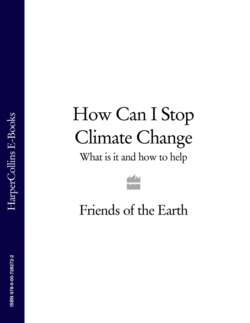Читать книгу How Can I Stop Climate Change: What is it and how to help - Литагент HarperCollins USD, F. M. L. Thompson - Страница 93
Carbon-dating climate change – a timeline
ОглавлениеEnd of the Permian period (251 million years ago). Geological evidence suggests carbon dioxide concentrations were four times higher than today. Much of Central Europe and the southern United States was desert, and seas were 20 metres higher. Methane releases from the sea beds are thought to have wiped out many living things. Some estimates suggest that 95 per cent of life on Earth was eradicated.
Start of the Holocene (10,000 years ago). End of the last ice age and the beginning of a relatively stable climate.
Medieval Warm Period (900-1200 AD). Relative warming in the Northern Hemisphere, with wine grown in the UK and droughts in North America. Temperatures in Europe are thought to have been 1°C -2°C warmer than at the start of the 20th century, but little evidence exists of warming on a global scale.
1750-1800 Start of the Industrial Revolution and the use of coal to drive industry.
1800 Start of the Anthropocene. According to some climate scientists, the stable period of the Holocene is coming to an end: humanity’s influence over the world’s climate is so great that the current age should be known as the Anthropocene.
1896 Svante Arrhenius, a Swedish chemist, identifies the global warming properties of greenhouse gases, predicting that a doubling of carbon dioxide levels could raise temperatures by 5°C.
1979 First World Climate Conference highlights concerns about levels of carbon dioxide in the atmosphere. The Intergovernmental Panel on Climate Change (IPCC) (see p.54) is established.
1987 The Brundtland Report, Our Common Future, makes the case for, and provides a definition of, sustainable development.
1990 The Intergovernmental Panel on Climate Change (IPCC) publishes its first assessment; it says climate change is a concern and human activities are likely to be contributing.
1992 Rio Earth Summit. World leaders meet in Rio de Janeiro, Brazil, to discuss the state of the planet, signing up to the United Nations Framework Convention on Climate Change.
1997 Kyoto Protocol. The first legally enforceable international treaty designed to cut greenhouse gas emissions. Signed by 141 countries, the Kyoto Protocol eventually comes into force in 2005.
2001 Newly-elected US President George Bush refuses to ratify the Kyoto Protocol. ‘I oppose the Kyoto Protocol because it exempts 80 per cent of the world, including major population centres such as China and India, from compliance, and would cause serious harm to the US economy.’
2002 Larsen B ice shelf breaks up. A piece of ice a quarter the size of Northern Ireland falls into the sea in the Antarctic.
2003 European heat wave. Some 35,000 Europeans die as a result of extreme temperatures.
2004 UK Prime Minister Tony Blair is ‘shocked’ by scientists’ warnings on climate change. He tells reporters that ‘unchecked climate change has the potential to be catastrophic in both human and economic terms’.
2005 UK Prime Minister Tony Blair makes climate change a priority for the G8 rich countries summit at Gleneagles. UK emissions continue to rise.
2006 UK Government agrees to introduce new legislation designed to tackle climate change. UK emissions continue to rise.
2007 The IPCC and former US Vice President Al Gore share the Nobel Peace prize. Gore’s film An Inconvenient Truth, highlighting the threat posed by climate change, wins an Oscar. Japan announces that climate change will be a priority at meeting of the G8 industrialised countries.
